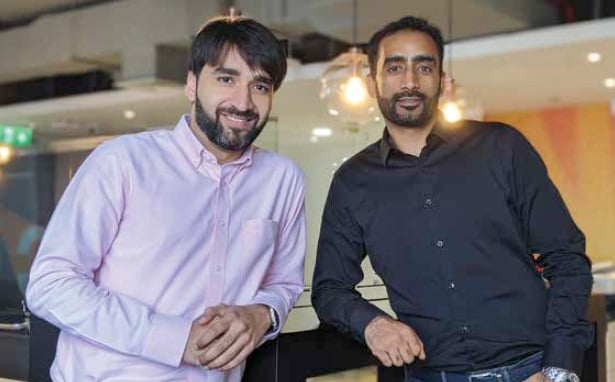 Since spend on influencer marketing is only going north, it made sense to educate our clients on the best way forward. With this in mind, we recently conducted an influencer workshop where Colgate marketing team members from across Dubai, Turkey and New York came to listen and share learnings from across markets.
Since spend on influencer marketing is only going north, it made sense to educate our clients on the best way forward. With this in mind, we recently conducted an influencer workshop where Colgate marketing team members from across Dubai, Turkey and New York came to listen and share learnings from across markets.
Some key questions were asked to find answers and maintain consistency across markets. Below are a few questions and answers about how we need to address challenges as an industry.
Q) What are brands looking for in 2020 around influencer marketing?
The approach for 2020 can be divided like this:
Understanding true reach and influence: Brands are moving towards nano- and micro-influencers because they target a niche audience, have more impact, can have direct communication and their content looks more authentic and organic. Their engagement rate percentage is higher, which means there is a bigger portion of their follower bases are exposed to and interacting with the message, compared with influencers with bigger follower bases.
Being aware of fraudulent influencer marketing: 20 per cent is something acceptable when we talk about bots or fake followers. As Wavemaker, we invest in tech that allows us to see the change in followers and following bases over the year and point out any discrepancies. Sentiment analysis is another way we gauge fake influencer activity, but this approach is a bit more time-consuming.
Setting the right KPIs: Follower base is not a true picture of reach. Based on past campaigns and back-end insights of influencers, we can predict what the expected reach will be if we are working with a specific influencer. If we are working with multiple celebrity, macro- and micro-influencers then we examine duplication and virality factor, again based on past campaigns, to get a final unique reach number for the overall campaign. Reach, engagement and deep engagement are three KPIs we can set for influencer campaigns. Selecting the right influencers: Our focus is not just on the genre of the influencer. We do a deep dive in the profile of the influencer and see what kind of content they produce, and ask if it matches with the tonality of the brand. We use different kinds of influencers across our purchase journey. If we want to create a priming bias, we focus on celebrity or mega-influencers as they create buzz and reach the maximum amount of people. If we want engagement then we focus on nano-, micro- or macro-influencers.
Also, through working with companies such as Kantar, we are able to build influencer archetypes by classifying them under different ‘tribes’. These tribes help brands find the most relevant match through character mapping and performance metrics. The end objective is to find the right influence fit and identify the influencer-audience relationship, the influencer’s impact on purchase decisions and common audiences between influencers.
Q) What is working (and not working) for brands?
Using influencers to boost content from brands without personalisation and customisation is something have been doing for the last few years. While brands are now shying away from just the amplification approach, Wavemaker strongly recommends customising content based on the genre, type of influencers and what their followers expect to see.
KPIs are set based on the engagement of last five to 10 posts on an influencer’s feed. While this is a great way to set KPIs for engagement, it completely ignores the reach and awareness KPIs. Brands then start to look at follower base to guesstimate the reach. This doesn’t give a realistic picture, and post-campaign they are most likely to hit a very different number.
Working with smaller-follower-base influencers has been picking up since 2019 and will keep on growing, as those content creators talk to niche audiences and have better engagement rates. We will see this sector evolve more in the next few years in a tight economy, where brands don’t see the shine on spending heavily on influencers with big follower bases.
Q) How will 2020 differ from previous years?
The difference between 2020 and previous years is mainly in our approach to the influencer-marketing process. We are investing more in tech, which helps us give stronger back-end numbers to create stronger number-based decisions. We rely on creative insights from influencers and take their input before we create content with them.
We keep changing our data inputs based on the ever-evolving algorithms of social platforms. Previously we amplified the message on the platform where an influencer was the strongest. We now look at platforms based on the objective of the campaign. Once we have the platforms locked, we work with influencers who are stronger on those platforms. We used to set KPIs based on influencers selected, whereas now the KPIs are set based on campaign objectives and then influencers are shortlisted who can fulfil those objectives.
Q) How are algorithms and content being affected on social platforms?
Instagram is one of the most used platforms for influencer marketing, and changes its algorithm every few months. Brands in different countries react to it differently. In US the average reach of an influencer post is about 10 per cent of the influencer’s following› in the Middle East it is estimated to be 60-50 per cent organically, depending upon type of influencer. Having said that, brands still want to hit an incremental reach to deliver awareness KPIs. In order to do this, Wavemaker recommends boosting content, but through the influencer’s own page, using Facebook ad managers and applying the filters set by the brand regarding the target audience. Boosting posts that works well organically delivers a better reach compared with lower-engaging posts.









